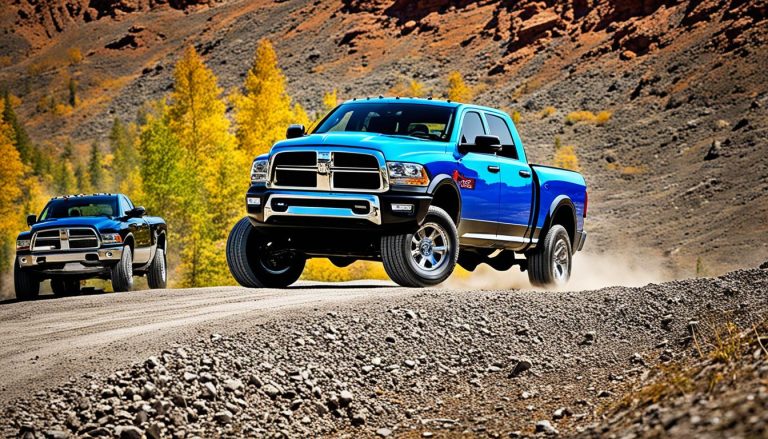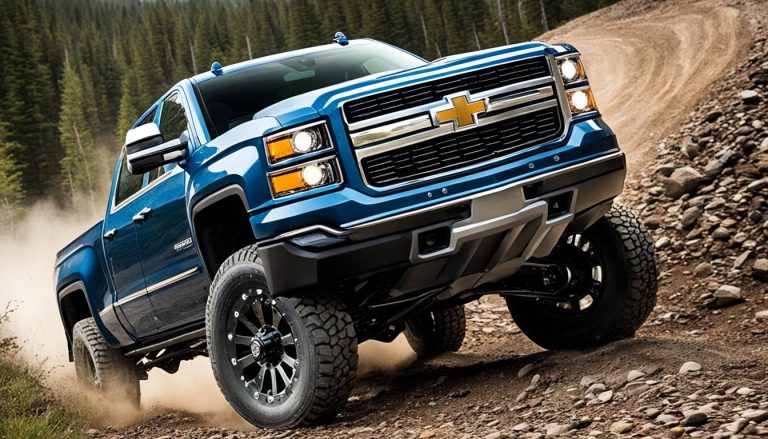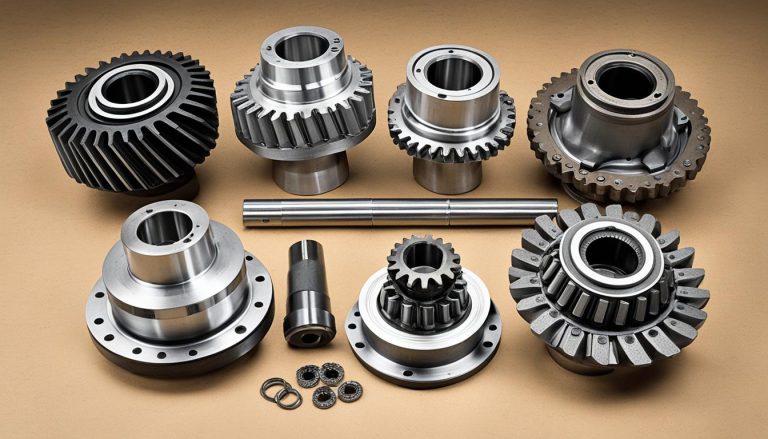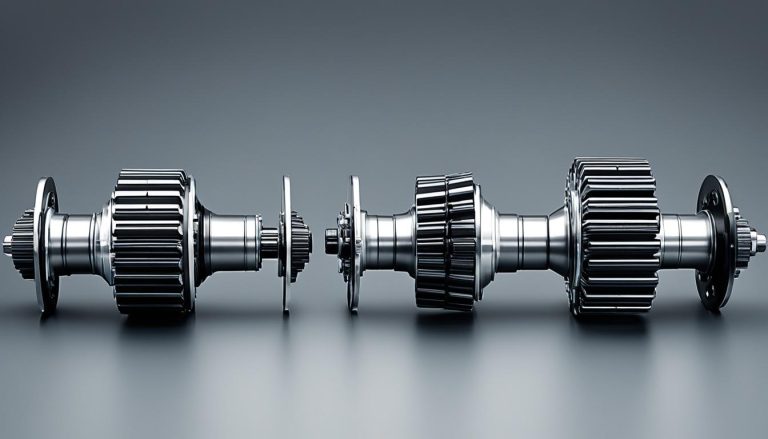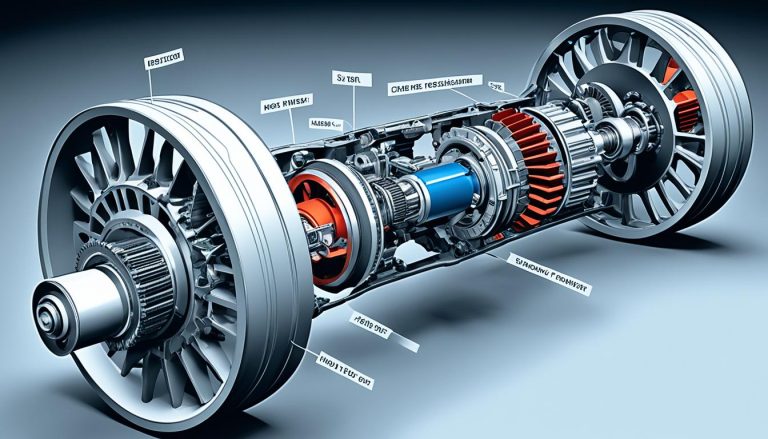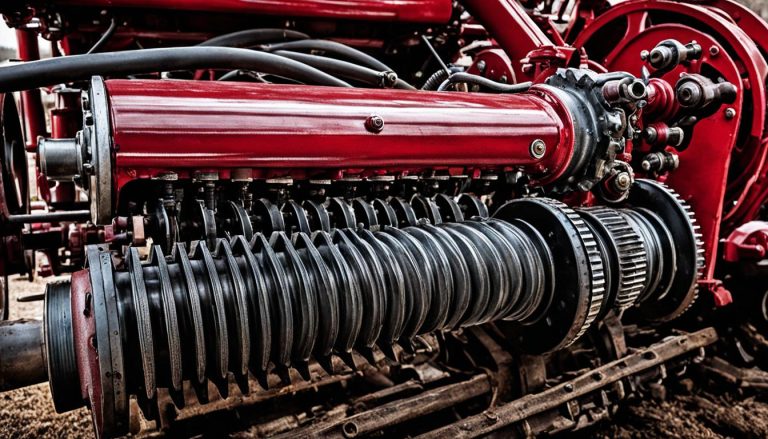Honda CRV Limited Slip Rear Diff Facts
As a passionate driver who appreciates the subtleties of vehicle mechanics, you may wonder about the capabilities of your Honda CRV’s drivetrain—specifically the intricacies of the Honda CRV limited slip rear diff. Understanding the differentials in your Honda CRV is essential for maximizing your driving experience, whether you’re tackling slippery roads or craving a more responsive ride. So, let’s dive into what sets the Honda CRV rear diff apart and why it’s significant to your journey behind the wheel.
Typically, Honda CRV models feature open differentials, which perform admirably under normal driving conditions. However, for those of you seeking enhanced traction—especially in snow and icy terrain—knowing the specifications like whether your CRV is outfitted with a limited-slip differential is vital. Knowing the details of your Honda CRV differential system can empower you to make informed decisions about potential upgrades or modifications that could enhance your vehicle’s performance.
Let’s explore the CRV’s drivetrain system and clarify some common misconceptions to ensure you’re fully informed about what your Honda CRV can do. With a better grasp on your car’s capabilities, you’ll enjoy every mile with confidence and control.
Key Takeaways
- Honda CRV models primarily come with open differentials but lack a factory-installed limited slip rear diff.
- Upgraded AWD systems in recent CRV models, particularly from 2017 onward, exhibit improved traction in adverse conditions.
- For enhanced traction, CRV owners can consider aftermarket solutions or AWD systems like SH-AWD in the latest models.
- Understanding the Honda CRV’s rear differential setup can lead to a more informed vehicle ownership and driving experience.
- The transition from 4WD to AWD in the Honda lineup marks significant advances in power distribution and handling in challenging road conditions.
Did Honda CRV Have a Limited Slip Rear Diff?
When delving into the specifics of the Honda CRV’s drivetrain over the years, many enthusiasts and potential buyers like yourself are curious about the presence of a limited slip rear differential (LSD). Did the Honda CRV have a limited slip rear diff? The answer is, for the most part, no. Traditionally, older Honda CRVs were not equipped with a limited slip rear differential. Instead, they featured a “realtime” 4WD system that reacts to traction loss by redirecting power, which is substantially different from the performance of a limited slip differential.
With technological advances and consumer demands for improved all-terrain performance, recent iterations of the Honda CRV have seen a marked shift towards actual all-wheel-drive (AWD) systems. These AWD systems are designed to intelligently distribute power to the wheels with the most traction, a far cry from the simplistic presentations of open or locked differential configurations often seen in online video demonstrations.
“Many drivers are surprised to learn that what they thought was an AWD was actually a 4WD in the earlier models of the Honda CRV. This highlights the importance of understanding your vehicle’s capabilities, especially when it comes to handling and driving in various conditions.”
In your quest to understand the inner workings of your CRV or while deciding your next vehicle purchase, it is critical to note the difference between 4WD and AWD setups. While both enhance traction in different driving conditions, they operate on differing principles that affect vehicle handling. Possibly misleading for some, this distinction is key, especially when debating the honda crv limited slip rear differential topic.
Consider the features of the drivetrain systems in the Honda CRV as detailed in the following overview:
| Model Years | Drivetrain | Power Distribution | Known For |
|---|---|---|---|
| Pre-2017 Models | Realtime 4WD | Reactive to slipping wheels | Conventional 4WD handling |
| 2017 Onward Models | AWD | Proactively adjusts to traction | Improved snow and ice performance |
The earlier CRV models’ so-called 4WD systems are actually a form of part-time, automatic four-wheel drive that is primarily front-wheel-drive until slippage occurs. As such, the concept of a limited slip differential CRV applies more to the improved, strategy-based AWD systems of recent years than to the historical models.
If you’re in the market for a vehicle with a robust AWD system for various driving conditions or looking to clear up any confusion regarding the Honda CRV’s drivetrain, this insight should clarify the evolution of CRV’s performance from solid 4WD to the more complex AWD systems seen today.
Understanding the Honda CRV’s AWD System Vs. Traditional 4WD
As you dive into the dynamics of the Honda CRV’s drivetrain systems, it’s essential to grasp the advancements that have elevated the all-wheel drive (AWD) capabilities of this beloved vehicle. No longer are the days of the real-time 4WD defining the CRV’s road handling; the contemporary models boast a sophisticated system designed for a multitude of terrains and weather challenges. Let’s explore what sets the modern AWD system apart from the 4WD technology of yesteryear.
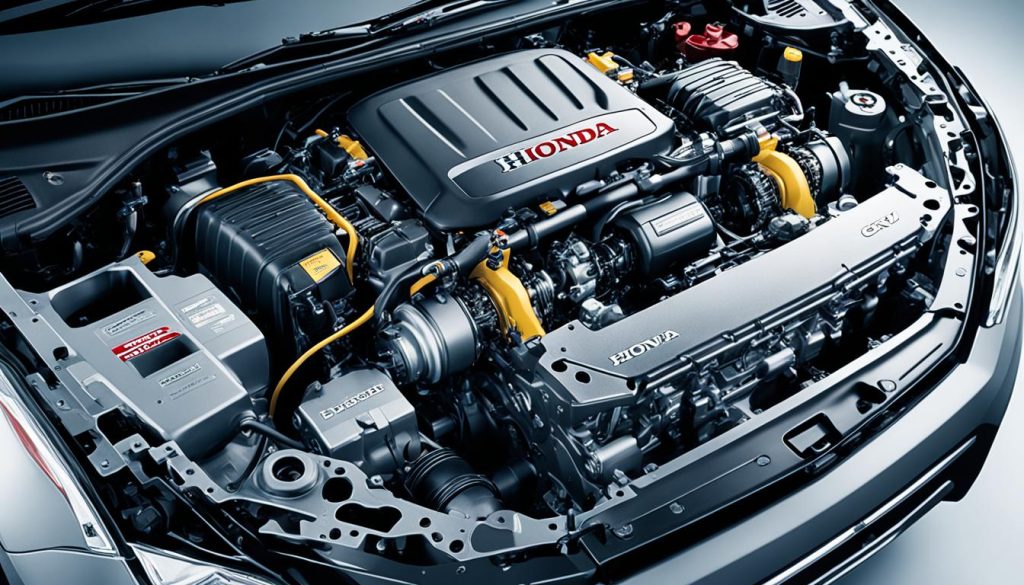
From Real-Time 4WD to Modern AWD Dynamics
The migration from the Honda CRV’s rudimentary 4WD to the advanced AWD system was a game-changer for drivers seeking reliable traction and stability. The latest honda crv awd system harnesses the power of smart engineering to distribute force across all four wheels, employing an array of differentials to maintain optimal performance.
Unlike the real-time 4WD, the honda crv all wheel drive setup proactively manages power delivery before slip occurs, enabling a more reactive and balanced drive.
The Evolution of Power Transfer in Honda CRV
Honda CRVs have undergone a significant metamorphosis in how they handle the essential task of power transfer. In older models, the somewhat primitive 4WD might have sufficed for moderate conditions, but the newer honda crv all wheel drive systems display prowess in delivering power more efficiently and effectively. This evolution from a honda crv rear wheel drive focused mechanism to a more comprehensive AWD scheme exemplifies Honda’s commitment to progression.
How the Latest Models’ AWD Systems Outperform Older Generations
It’s in the face of challenging environments that the contemporary honda crv awd system truly shines. With advancements such as SH-AWD, drivers experience enhanced control and improved acceleration despite adverse road conditions. This starkly contrasts with older generations which lacked the honda crv rear differential sophistication, affirming that the newest AWD models are in a league of their own when addressing difficult terrain.
| Feature | Realtime 4WD (Older Generations) | Modern AWD (Current Models) |
|---|---|---|
| System Type | On-demand 4WD | Full-time AWD with intelligent control |
| Traction Control | Basic, reacts to slip | Advanced, anticipates and prevents slip |
| Performance in Adverse Conditions | Adequate | Superior, with systems like SH-AWD |
| Differentials | Single, basic function | Three, including a sophisticated central differential |
In essence, the transformation from honda crv rear wheel drive to the multifaceted honda crv awd system illustrates both the innovative journey Honda has embarked upon and the tangible benefits you, as a CRV driver, can enjoy. The result? A versatile vehicle ready to tackle whatever the road—or off-road—presents.
Enhancing Your Honda CRV’s Traction with Aftermarket Solutions
If you’re passionate about optimizing your Honda CRV’s performance, particularly if it lacks the advanced traction of a honda crv limited slip rear differential, there’s good news. Aftermarket solutions are available to elevate the capabilities of your vehicle’s drivetrain. Among these, the Traction Concepts LSD Conversion Kit stands out as a noteworthy upgrade for models ranging from 2002 to 2006 that originally came with a standard honda crv rear diff. This system can markedly enhance your CRV’s grip, particularly under challenging driving conditions.
Traction Concepts LSD Conversion Kit
The Traction Concepts Limited Slip Conversion Kit introduces a level of traction customization that can significantly boost your honda crv rear differential‘s performance. Intended for those passionate about their vehicle’s capabilities, this LSD conversion kit is designed to be retrofitted into your existing differential setup, maintaining the originality of your CRV while providing the benefits of a honda crv limited slip rear diff.

Upgrading to a Limited Slip Differential: Improving Performance and Safety
An upgrade to a limited slip differential provides not just an improvement in performance, but also an important boost in safety. This aftermarket enhancement can furnish better handling across various conditions, from daily commutes to competitive environments. You’ll find the responsive honda crv differential becomes a trusted ally in both efficiency and control.
Lifetime Warranty and Installation Advice
Traction Concepts stands behind their Limited Slip Conversion Kit with a robust lifetime warranty, assuring you of protection against manufacturer defects. It’s important to note, however, that the installation of your new honda crv differential component should ideally be undertaken by a professional. The drivetrain is a complex system and precise installation is key for the conversion kit to function correctly and safely in your Honda CRV.
| Feature | Benefits |
|---|---|
| Enhanced Traction | Improved grip during acceleration and on slippery surfaces |
| Safety | Better handling reduces risk of skidding and traction loss |
| Lifetime Warranty | Peace of mind with protection against defects |
| Performance | Optimized for competitive driving and everyday reliability |
Building on the honda crv rear differential‘s solid foundation, an LSD upgrade via a high-quality aftermarket kit can transform your driving experience. Make sure you keep performance, safety, and warranty considerations in mind as you navigate the world of Honda CRV customizations.
Addressing Common Myths About Honda CRV’s Rear Wheel Drive
It’s quite common for some misconceptions to circulate regarding the drivetrain capabilities of the Honda CRV. As a vehicle that has built a reputation on the robustness of its all-wheel-drive system, it’s important to dispel some of the myths surrounding the idea that it may function as a Honda CRV rear wheel drive. In reality, the CRV is designed with either front-wheel drive or Honda CRV all wheel drive options, and there is no traditional rear-wheel drive version of the CRV.

The key aspect to understand is that the all-wheel-drive system of the CRV is on-demand, meaning that the rear wheels engage only when traction loss at the front wheels is detected. This approach ensures efficiency and better dynamics under normal driving conditions, while still providing the added traction benefits of AWD when necessary. Let’s explore the specifics of the AWD system and debunk some of these myths with accurate information.
“The Honda CRV utilizes an intelligent AWD system that automatically adjusts to driving conditions, ensuring optimal performance without the misconceptions of being rear wheel drive.”
| Feature | Honda CRV’s AWD System | Typical RWD System |
|---|---|---|
| Primary Driven Wheels | Front wheels (rear engaged when needed) | Rear wheels |
| Traction Control | On-demand engagement of rear wheels for better traction | Continuous rear-wheel engagement |
| Fuel Efficiency | Generally more fuel-efficient due to FWD bias | Less fuel-efficient due to permanent power to rear wheels |
| Handling and Stability | Designed for varied conditions, optimizes stability | Often preferred for sporty handling characteristics |
As highlighted above, the Honda CRV is engineered to offer the best of both worlds: the efficiency and ease of managing a FWD vehicle, with the assurance and capabilities of AWD when it’s required. So next time you come across a debate or a claim about the Honda CRV rear wheel drive abilities, you’ll be well-armed with the facts to navigate through the myth.
Pros and Cons of Limited Slip Differential in Honda CRVs
If you’re exploring ways to enhance your Honda CRV’s performance, particularly its handling and traction, you’ve likely come across the concept of a limited slip differential (LSD). Indeed, an LSD can significantly boost your vehicle’s capabilities providing improved handling, more responsive acceleration, and better traction across various terrains. The benefits of a honda crv limited slip rear diff are most apparent when you’re driving in conditions with low grip, such as on wet roads or during winter weather. The LSD is designed to distribute power more evenly between the wheels, minimizing wheel spin and ensuring that each wheel gets just enough torque to maintain control.
On the flip side, introducing a limited slip differential to a Honda CRV does come with its challenges and potential downsides. For starters, integrating an LSD into a vehicle that wasn’t fitted with one from the factory might invite a complex retrofitting process. This can be technically demanding and often warrants professional installation. Moreover, there’s the consideration of increased tire wear; since LSDs work by allowing the wheels to turn at different speeds, this can result in additional strain on your tires, leading to more frequent replacements. It’s imperative to weigh these factors when pondering the inclusion of a limited slip differential crv.
Ultimately, your decision will depend on your driving demands and whether the benefits outweigh the possible drawbacks. While an LSD can undoubtedly elevate your Honda CRV’s agility and surefootedness on less-than-ideal surfaces, caution is advised. Consider your typical driving scenarios and consult with professionals to determine if this upgrade aligns with your needs. A carefully contemplated decision will ensure that any modifications enhance your driving experience efficiently and cost-effectively.
FAQ
Did Honda CRV Have a Limited Slip Rear Diff?
Historically, older versions of the Honda CRV did not come with a limited slip rear differential. They were equipped with a “realtime” 4WD system that is quite different from the AWD systems Honda has implemented in more recent models.
Can you explain the difference between Honda CRV’s AWD system and traditional 4WD?
Sure! The traditional 4WD system in the older Honda CRVs operates differently compared to the modern AWD system. While the earlier 4WD system would react to slippage and then send power to the rear wheels, today’s AWD system in Honda CRVs uses three differentials and transfers power to the wheels with the best traction, improving overall handling and performance in various conditions.
How has the power transfer in Honda CRV evolved over the years?
Over time, the Honda CRV’s power transfer capabilities have evolved significantly. Initially offering a reactive 4WD system, newer models now feature sophisticated AWD systems that provide better power distribution to the wheels that need it most. This transition has especially improved the CRV’s performance in challenging driving conditions like snow and ice.
Do the latest Honda CRV models have better AWD systems than older generations?
Absolutely! The newest generation of Honda CRVs is equipped with AWD systems that represent a significant improvement over the capabilities of the older 4WD systems. These modern AWD systems are key in maximizing traction and stability, particularly in snowy and icy driving conditions.
What aftermarket solutions are available to enhance traction for the Honda CRV?
If your Honda CRV didn’t come with a limited slip differential and you’re looking to improve traction, you can look into aftermarket solutions like the Traction Concepts Limited Slip Conversion Kit. This can be installed in the rear differential of certain CRV models to enhance handling and performance.
How does upgrading to a limited slip differential affect the performance and safety of a Honda CRV?
Upgrading to a limited slip differential can offer several benefits, including improved handling, quicker acceleration, and better traction in low-grip conditions. It enhances performance and can contribute to the safety of your daily driving experience by ensuring more consistent traction across different driving surfaces.
What should I know about the warranty and installation for aftermarket limited slip differentials?
Aftermarket limited slip differentials, like those from Traction Concepts, typically come with a lifetime warranty against manufacturing defects. However, it’s crucial to have them correctly installed by a professional, as they are intricate drivetrain components that must be set up properly to function as intended.
Is the Honda CRV rear-wheel drive?
There’s a common misconception about this. The Honda CRV is not a rear-wheel-drive vehicle but rather comes with either an AWD or a 4WD system. The AWD system works by engaging the rear wheels only when necessary, which is often misunderstood.
What are the pros and cons of a limited slip differential in a Honda CRV?
Limited slip differentials offer several advantages, such as improved vehicle handling, better acceleration, and enhanced traction, especially in conditions where grip is compromised. However, there can be drawbacks such as increased tire wear due to the additional traction and handling complexities, and potential challenges involved in retrofitting a system not originally designed for the vehicle.

